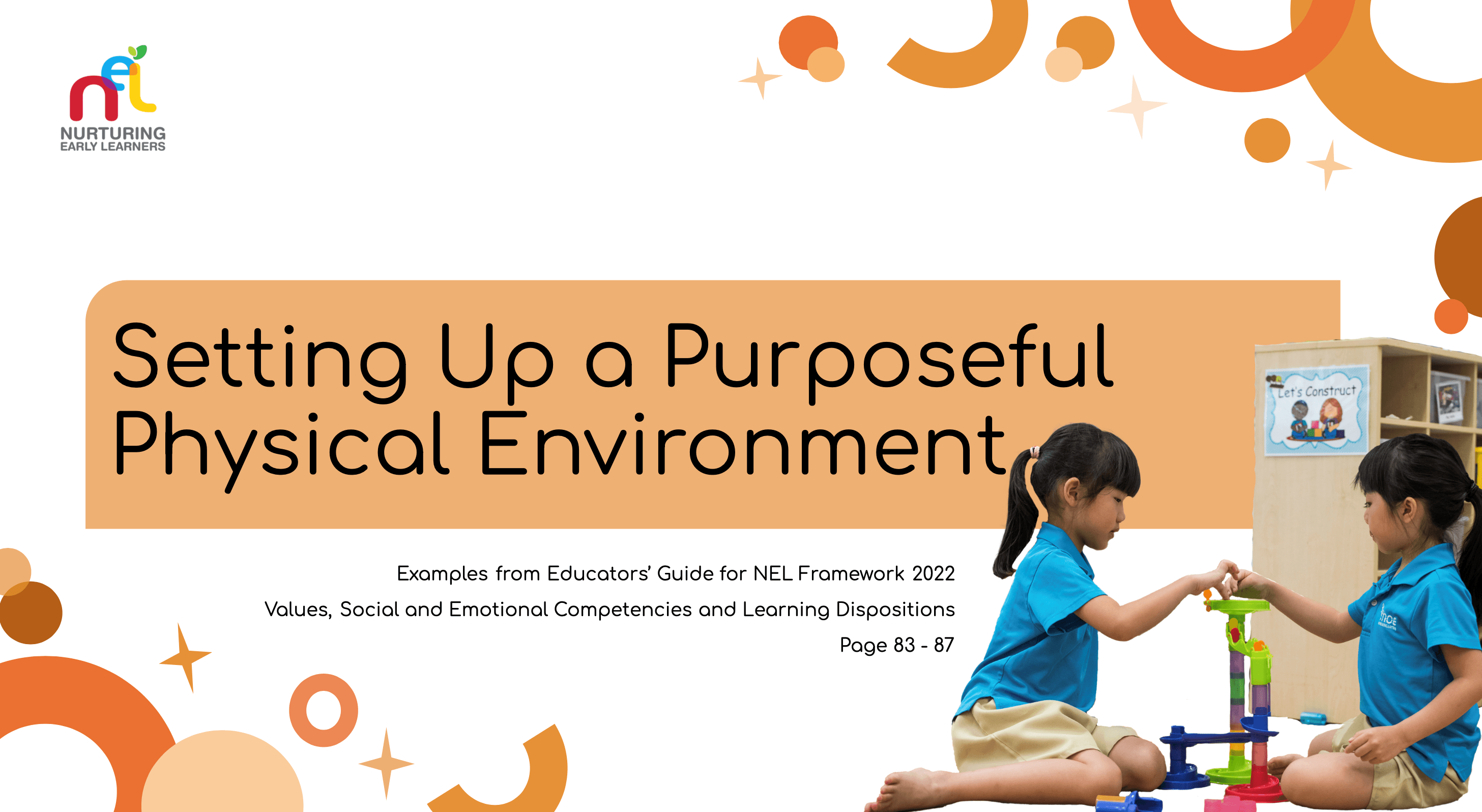Organising the learning environment
Physical environment
You can intentionally create a physical learning environment which reinforces children’s understanding of VSLD.
Interactional environment
In addition to providing opportunities for children to interact in pairs or small groups throughout the day, you can incorporate the following strategies to promote positive interactions and Values, Social and Emotional Learning (VSLD):
Thinking Routines: Use thinking routines to guide classroom interactions, encourage thoughtful discussions and promote collaborative problem-solving among children.
Involving Children in Rule-Making: Engage children in suggesting class rules to promote positive interactions. This involvement empowers them to take ownership of their classroom environment and encourages responsible behavior.
Temporal environment
You can create opportunities for children to apply VSLD by tapping possibilities that routines and transitions naturally offer, such as:
Arrival time: Encourage children to greet each other and check in on their feelings for the day, fostering empathy and emotional awareness.
Snack time: Promote a sense of community by having children hand out snacks to others and wait for everyone before eating
Learning centre time: Emphasise responsibility by having packing and returning their materials neatly
Toileting: Encourage respect and patience by having children wait for their turn and respect others’ privacy
Dismissal: Promote reflectiveness by getting children to recount and learn from their day’s experiences
.png)
